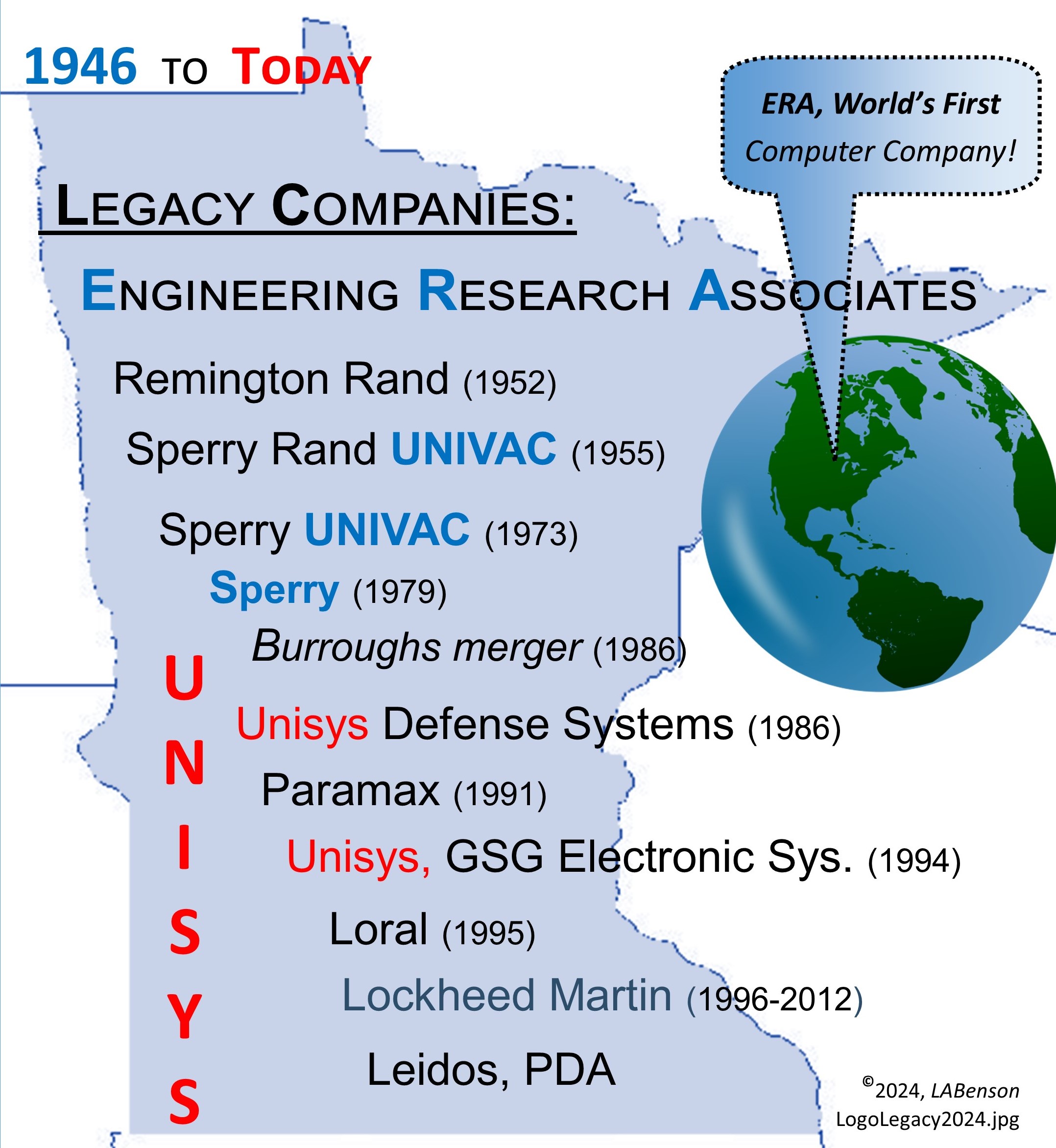

Information Technology (IT) Pioneers
Retirees and former employees of Unisys, Lockheed Martin, and their heritage companies
Commercial Systems, Chapter 69
1. Introduction, Commercial Systems
Over the decades our companies have developed systems that were commercial in nature, i.e. flight reservation systems, government management systems, aircraft cargo management systems, banking systems, etc. Many of these systems had Exec 8 as an operating system which evolved into OS-2200 as described in a Unisys-OS paper.
This page is a place holder awaiting inputs from former and current employees.
2. Topical Information
Tell site visitors about our company's commercial systems history; including location, customers, personal experiences, and other information that will help people remember us. Please keep this information brief but informative.
The Webmaster will find a place for your submittal in our anthology!
3. Precision Agriculture Business Segment
A new business initiative as experienced by Steve Ernst and documented by him on June 1, 2016.
This time that I spent working was one of the most exciting and scary times in my career at Univac, Sperry, Unisys, Loral, and Lockheed Martin. In 1994 Unisys Corporation (later Lockheed Martin) initiated a number entrepreneurial activities into new business areas in hope of stemming the continued loss of business in the defense division. One of these was the “Precision Agriculture Business Segment”. This segment was able to establish partnerships with three agriculture equipment manufacturers and commodity operations: namely Ag-Chem Equipment Corporation of Minnetonka, Minnesota; New Holland Corporation of New Holland, Pennsylvania; and Cargill of Minnetonka, Minnesota. Since then the Precision Agriculture Business Segment has moved from a start-up to a position of established sales and a back-log within Lockheed Martin.
One product made it into production; AgNav for Ag-Chem with multiple production lot builds. Other products that were in various stages of development were a Yield Monitor, Forage Harvester Knife Sharpener Sensor, Soil Analysis System, Weed Imaging System, plus some other concepts were evaluated. Additional products are in development with these partners. Revenues in calendar year 1996 were approximately $1 million and were in the low seven (7) figures for the next two years. The team remained in the break-even mode until approximately 1998, when it was closed. The multiple mergers, the desire to move the needle (revenue) to the eight (8) figure range, and a developing cyclical agriculture down-turn all took their toll.
The team began in Eagan, but moved to Minnetonka to be co-located in the same building, but separate offices with one of the customers. This was close to a new business start-up situation as possible. We had to work with Eagan contracts and finance, but otherwise were independent. The on-site team consisted of eight people. Product build was done by a contract manufacturer. The concept was to leverage the team’s sensor processing and integration skills and apply that knowledge to a new market domain, “Precision Agriculture”. What we lacked was market and distribution, and a good understanding of the product definition and performance requirements. Therefore, the model we developed was for Lockheed Martin to retain the design and manufacturing rights and the partner to retain exclusive marketing and distribution rights. Each partner contributed one-half of the development funds.
A unique opportunity was available to participate in the newly expanding precision agriculture market by capitalizing on the ability to develop products using recently available cost effective electronics technology. The precision agriculture market was moving to the next stage of growth where the major agriculture equipment manufacturers desired to participate more directly with discriminating technologies. The major agriculture equipment manufacturers tend to be focused on the “metal bending” aspects of the agricultural products because of historical and skills issues. Therefore, they need to reach out to augment their capabilities with electronics systems capabilities. The type of sensors we brought to the table were new to this application space. Such as: lasers, microwaves, multispectral imagery, spectroscopy, GPS, IMUs, and associated sophisticated signal processing algorithms.
Lockheed Martin was awarded the ASAE 50 Award for AgNav 1996: “AgNav Global Positioning System, AgNav is the first robust non-differential navigation system to be provided in the arena of precision farming.” We also received positive press in the NY Times for turning swords into plowshares. Numerous patents were granted for our revolutionary applications.
In retrospect it takes more time to establish a business and we were definitely ahead of our time. Precision Agriculture is now mainstream in farming and continuing to grow. Another lesson learned is to have a business model that matches the customer set and market that you are pursuing. We had the right business model and it was not a defense business model.
4. Flight Reservation Systems
These systems started in the 50s with the File Computer. It would be great if someone would write about the early days of these systems. We do have one story about flight reservations - it is based out of England and was our 'Article for the Month' for November 2013. UNIVAC's London Development Center by Arlyn Solberg. 494s, 1108s, Exec 8, Airline Reservation Systems, and Minnesotans overseas are all part of this brief history. Unfortunately, Arlyn has passed away. The London Development Center paper was updated in 2020 based on comments from an Air France reservations systems developer.
5. tbd
What do our customers have to say? Consider using some space to tell the story of the Legacy through customers' voices. Their word is more powerful than anything you can say for yourself.
In this Chapter
- Introduction [left]
- Topical Information
- Precision Agriculture
- Flight Reservation Systems
- tbd
- tbd
Chapter 69 edited 7/13/2025.
